Whitstable is a British coastal gem, and not at all what I was expecting. For those living in the Southeast of the UK, I’m sure you will be well acquainted with Whitstable, but if you live at ‘the other end of the country’ then it might not be on your radar. We decided to visit Whitstable after it came up in conversation a couple of times in relation to the best places to eat oysters and were bowled over by what we found.
Where is Whitstable?
Whitstable is in the county of Kent (‘the Garden of England’) in the Southeast of the UK. It’s located on the coast just a few miles north of the city of Canterbury.
As it’s a 5-hour drive from our home in North Yorkshire, we booked a long weekend to visit Whitstable, driving down after rush hour on a Friday and driving back after rush hour on a Monday. As we were travelling with our dog, Linus, then we needed to make several ‘comfort breaks’ along the way – Peterborough Services on the A1 have quite a large patch of grass for exercising dogs which is useful to know.
Note – if you use the Dartford Crossings (tunnel or bridge) on the way to Whitstable, remember to pay the required toll on-line as soon as you reach your destination to reduce the chances of forgetting to do so!
About Whitstable
Whitstable Oysters
Whitstable (‘the pearl of Kent’) is a town famous for its oysters grown in the inter-tidal waters of Whitstable Bay. Whitstable sits at the mouth of the Swale River where freshwater mixes with the salt water, and nutrients, of the Thames Estuary. The waters are shallow and easily warmed by the sun, providing an ideal environment for the oysters to prosper. Whitstable oysters are unique for their provenance and quality.
Oysters have been enjoyed in Whitstable since Roman times – the Romans loved the town’s oysters and are said to have sent them home as a delicacy during their time in the area.
The Whitstable Oyster Company can trace its history back to the 1400s, making it one of the oldest oyster companies in Europe. The Whitstable Oyster Fishery Company (WOFC) was then formed by an Act of Parliament in 1793. At its peak in 1850 (when oysters were regarded as ‘the food of the poor’ because they were cheap and nutritious), the WOFC was sending 80 million oysters a year to Billingsgate fish market. The company harvested the famous (but relatively rare) Royal Whitstable Native Oyster.
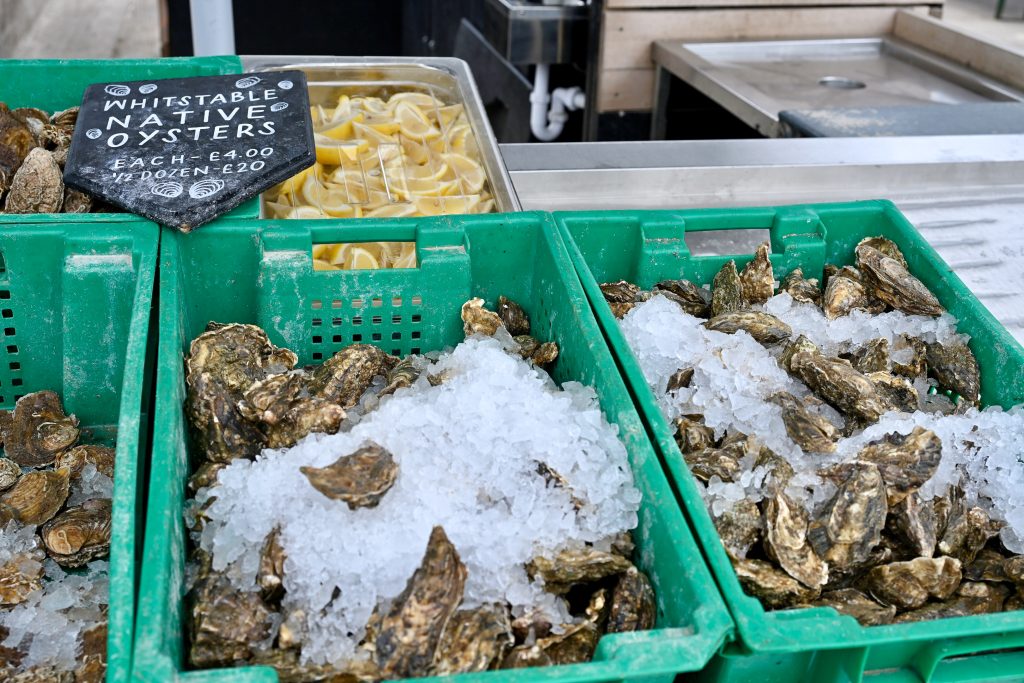
Sadly, after this era, the Whitstable oyster trade was not all plain sailing – severe winters, over-fishing, pollution, and diseases from imported stock all affected the oyster industry which fell into decline. By the mid-seventies, there was only one remaining employee of the WOFC. Enter stage right, Barrie Green and John Knight who bought the remaining assets in 1976 and began the long restoration project of the Whitstable Oyster Fishery Company.
Today, along with harvesting the Native oysters, the company grows 10.5 million Pacific Rock oysters in mesh bags on trestles in the intertidal zone each year. The Rock oysters are grey and available all year round, in contrast to the Royal native versions which are brown and traditionally only harvested ‘when there is an R in the month’.
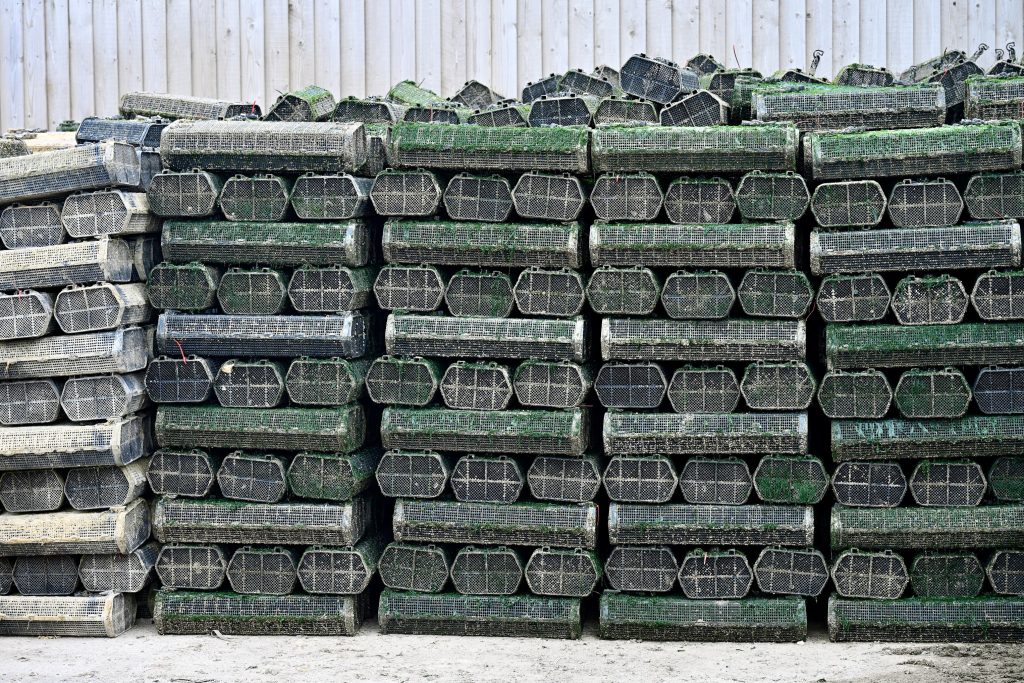
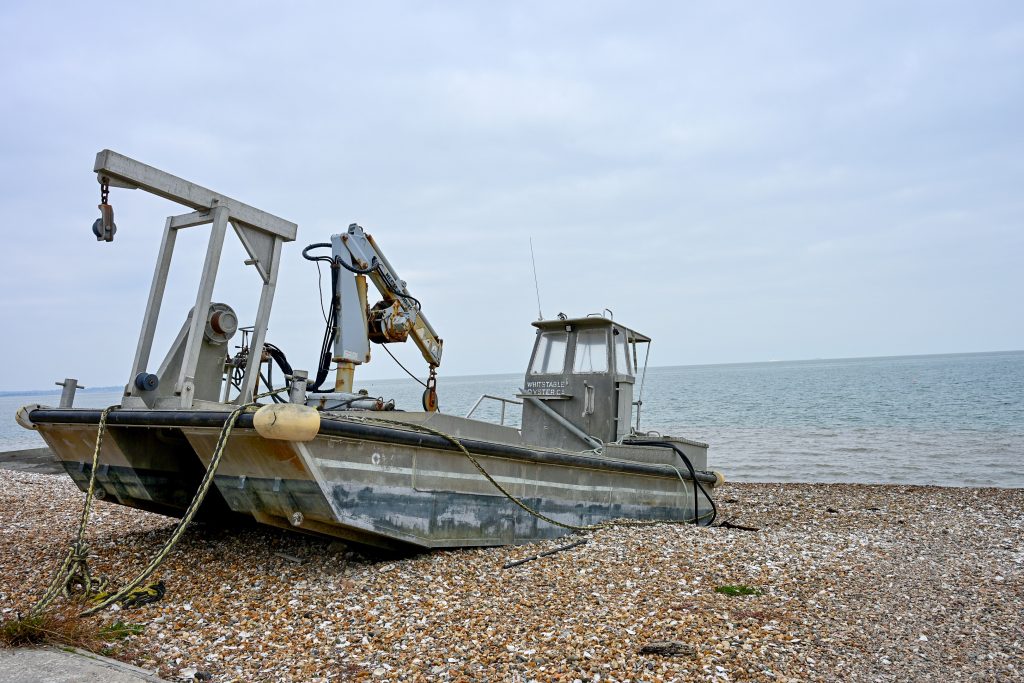
Whitstable Oyster Tours – when you visit Whitstable, you can book a guided tour of the Whitstable Oyster Farm to learn about the production process from seed to plate.
Whitstable Oyster Festival – if you visit Whitstable in the 3rd week in July, you’ll hit the Whitstable Oyster Festival, so make sure to book your accommodation early that week.
The options for eating oysters in Whitstable seem endless, but no matter where you try them, they should be super fresh. Even if you’re suspicious of oysters, Whitstable is as good a place as any to try them and experience the ‘taste of the sea’. I thought that I had eaten the best oysters in Ston, Croatia, until sampling Whitstable oysters.
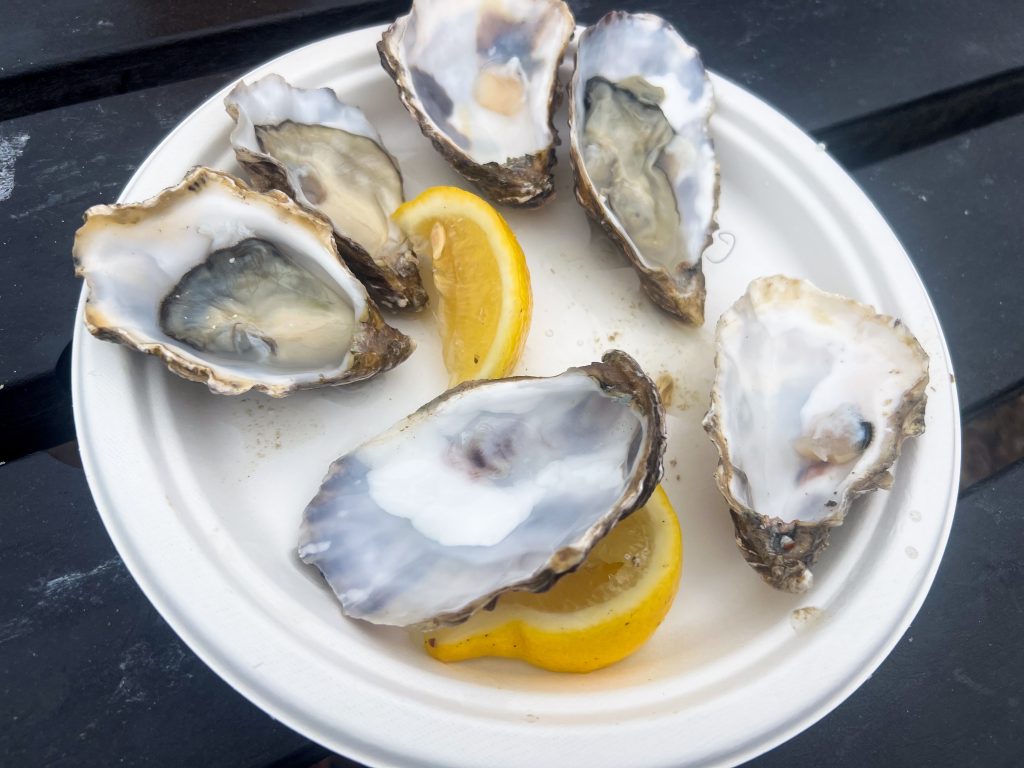
The general vibe in Whitstable
Whitstable seems to have a very ‘healthy high street’ – Harbour Street runs parallel to the town’s pebble beach and promenade. All the shops were occupied, with very few ‘To Let’ signs, offering:
- Things that you need – greengrocers (at least 2 on the strip), butchers, sewing machine shop, knife sharpening service and every type of service for your boat (Dinghy shop) should you require them.
- Things that you might want – independent retailers, gift shops, fashion boutiques, art galleries, craft shops, cafes, cosy restaurants, retro wine bars (at least 2 of them), fish and chip shops, and proper pubs (lots of them).
I found Whitstable to be very colourful (even against the grey October skies of our visit) – full of multicoloured houses, shops, and beach huts, quirky signs and wall murals. I have never seen so much leopard print being sold in the shops or worn by women and men around town. As a result, Whitstable has an arty vibe. Maybe this is one of the reasons why the town has attracted celebrity residents over the years? Keep your eyes peeled when you visit, as you never know who you might see.
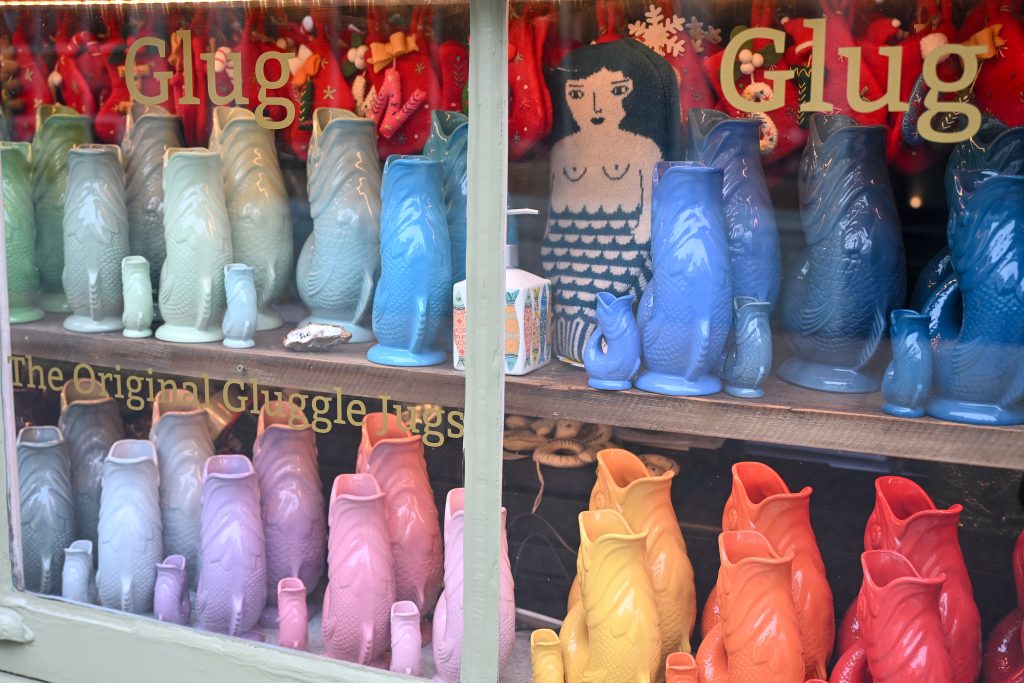
The best way to explore Whitstable
Whitstable Shore Circular (7.6 km)
We found a good walk on the AllTrails App called the Whitstable Shore Circular which gave an excellent introduction to the town, with the bonus of being easy going and flat.
The Whitstable Shore Circular walk officially sets off from the top of Tankerton clifftop lawns on the east of town, but we started on Harbour Street as it was closer to our AirBnB – as it’s a circular walk, it doesn’t matter where you start. There’s a pay and display car park on Victoria Street if needed.
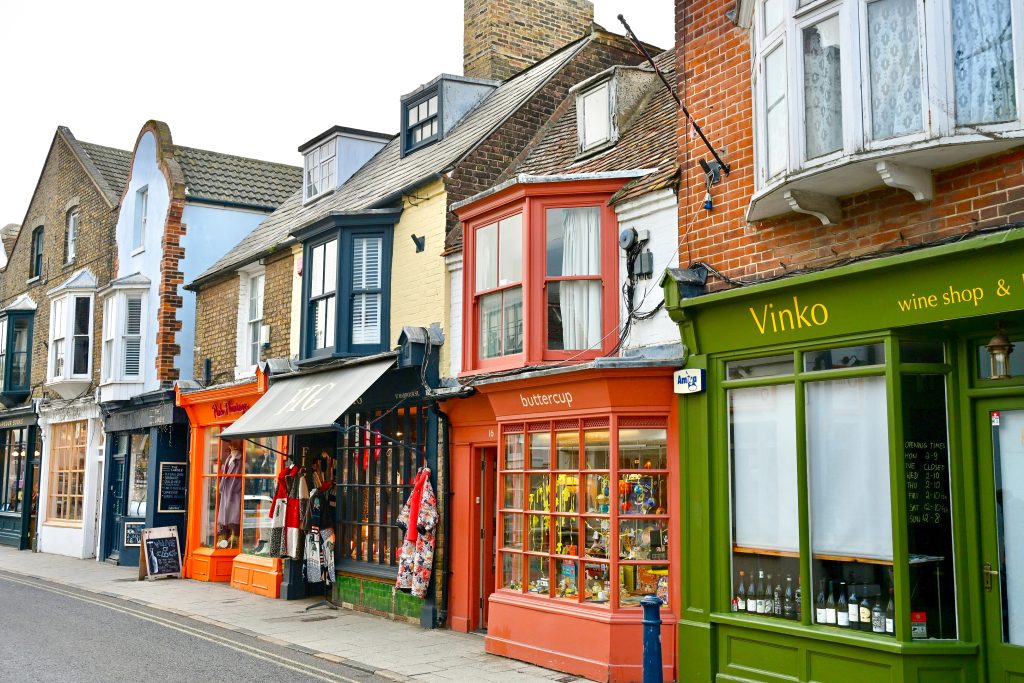
Walking along Harbour Street allows you to check out the lovely variety of independent shops and eateries – make notes of where to return to later as you don’t want to be carrying shopping bags on your walk. Also:
- Look out for the small lanes and alleyways crisscrossing Harbour Street, such as, Squeeze Gut Alley and Skinners Alley.
- Visit the small Whitstable Museum & Gallery which houses a good exhibition about Whitstable’s oysters and fishing industry.
- Pop into the atrium of the wonderful Art Déco Wetherspoons where you’ll find photos and movie memorabilia relating to actor Peter Cushing’s films. The pub is known as The Peter Cushing after the ‘Dracula’ actor who lived in town. The pub still has some fantastic Art Deco decorations and lighting.
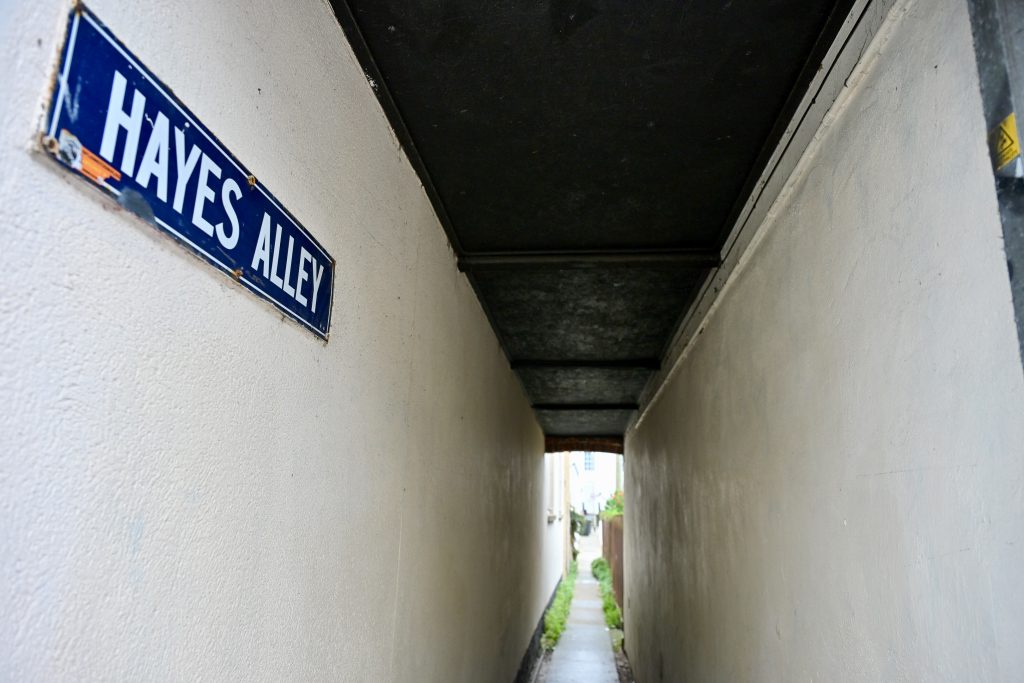
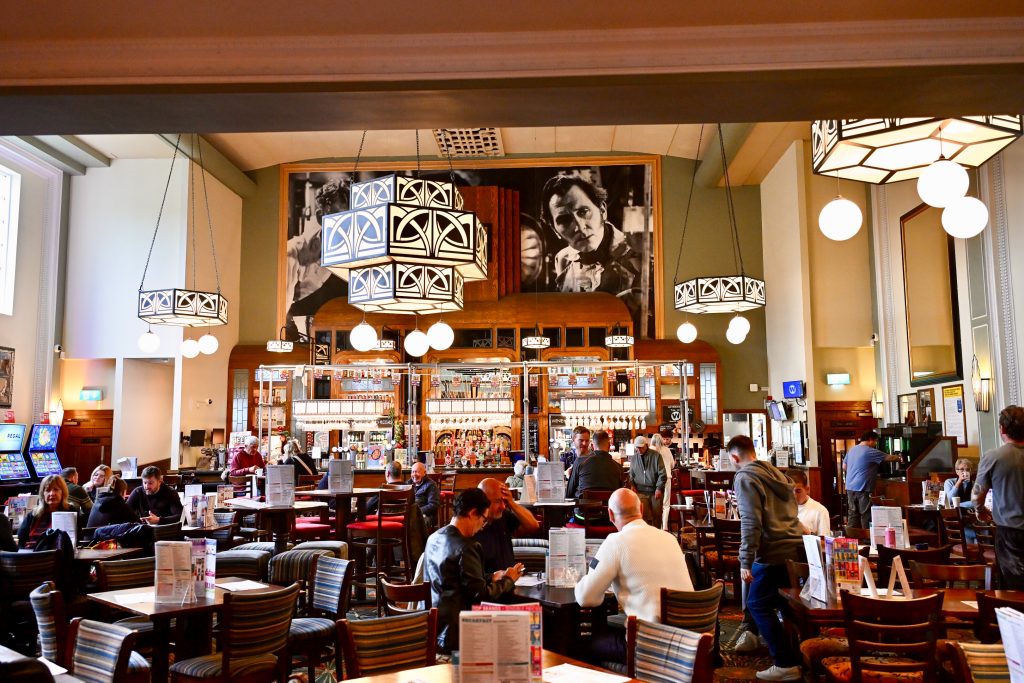
From Harbour Street, the route then heads right along a residential lane, through some trees and over the railway line which runs parallel to the beach, with a row of beach huts in-between. We once saw the back of these beach huts on a Murder Mystery Train Journey on the British Pullman from London Victoria – the train took a circular route from London around Kent and back, whilst we tried to work out ‘Who Dunnit?’ over lunch.
Emerge onto West Beach and see the lovely row of beach huts from the front. These beach huts had verandas which were chained up in front of the huts to act as flood defences when shut up for the winter (and Autumn) season.
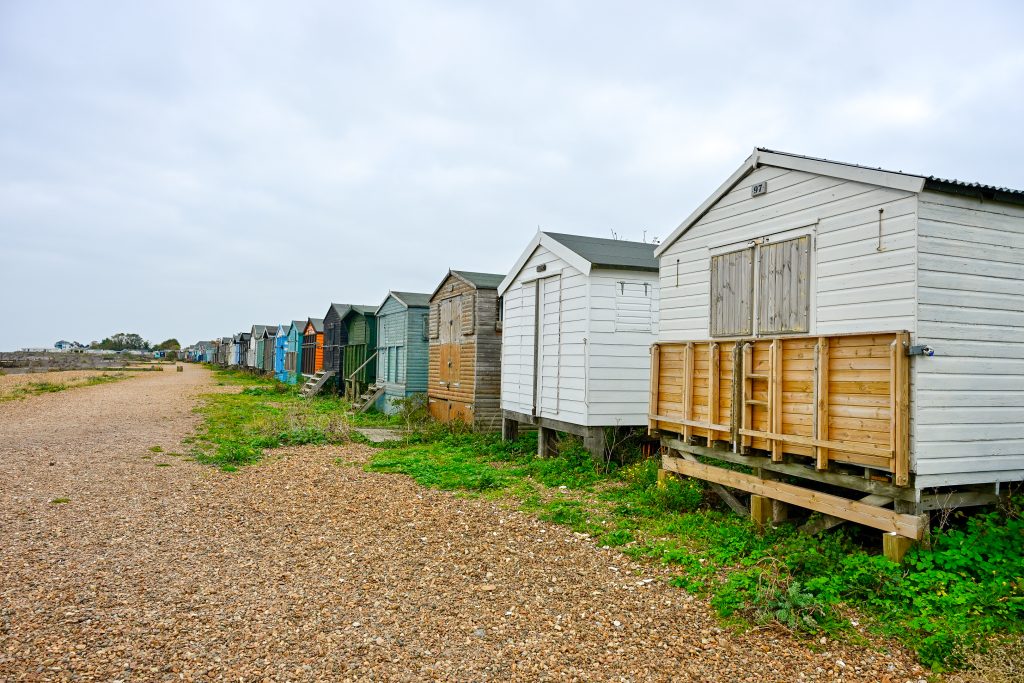
Now you can walk along the pebble beach back towards the town centre, breathing in the sea air and spotting things on the horizon, such as, the:
- Isle of Sheppey on the Kent side of the Thames Estuary.
- Essex coastline in the distance behind Sheppey (if the light’s right).
- Maunsell Forts (Sea Forts) – fortifications on stilts in the water, built to protect the area from German attack during the WWII, and used by pirate radio stations in the 1960s.
- Kentish Flats Offshore Wind Farm to the west of the Sea Forts. [On land, look out for the windmills around town – we managed to spot a couple on our visit].
- The Oyster pens, and lots of them.
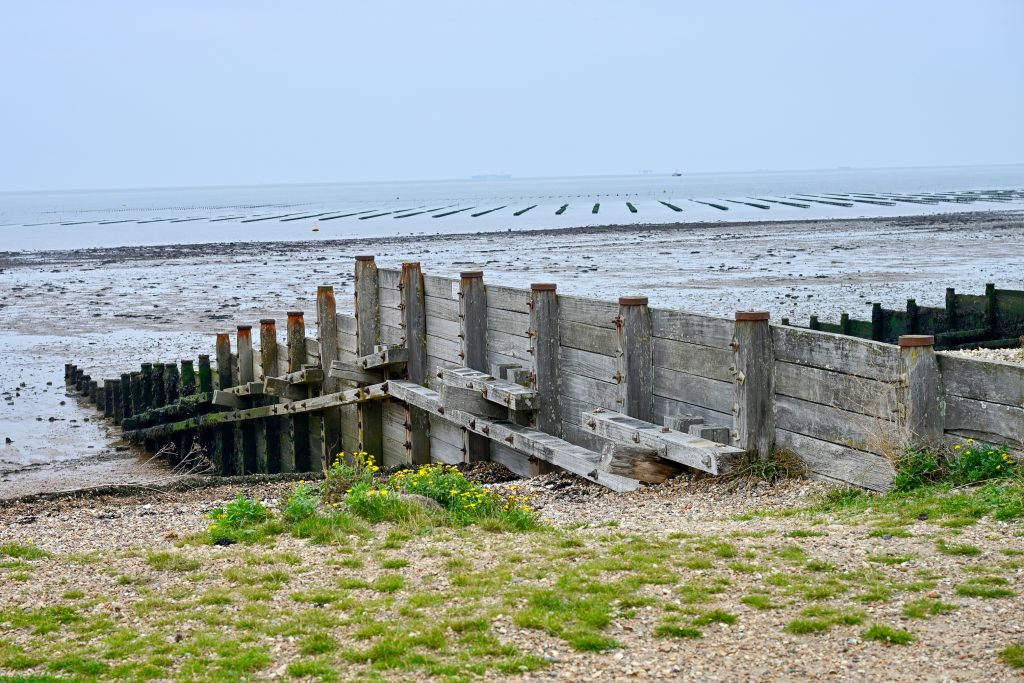
As you continue walking east, look out for the blue plaque on one of the sea facing houses, denoting where actor Peter Cushing lived when he was a Whitstable resident.
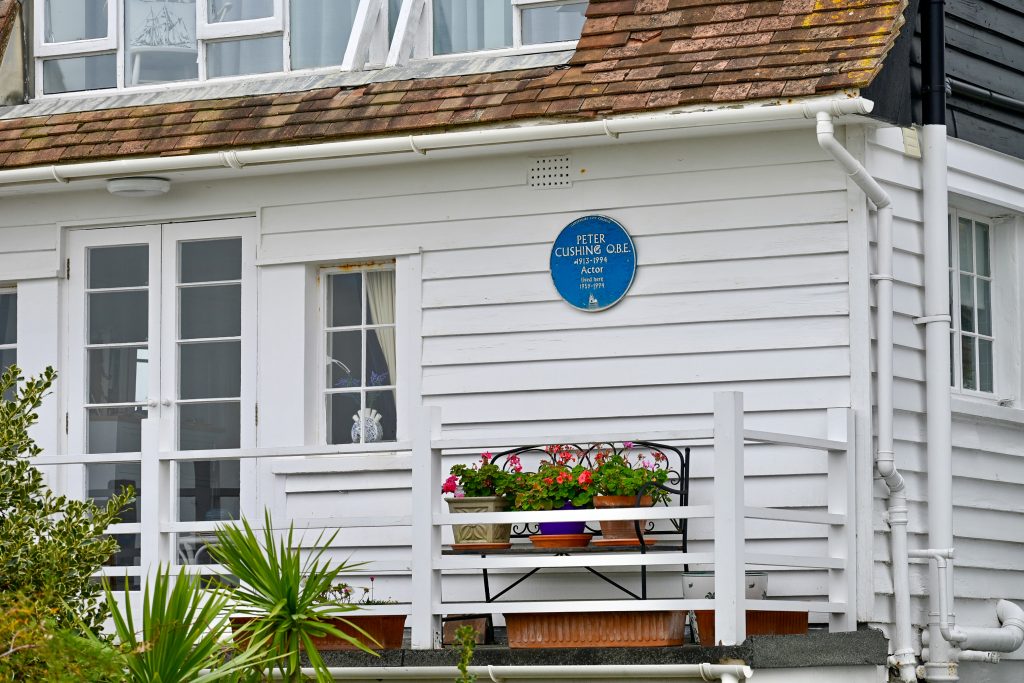
Shortly after the blue plaque, you’ll reach The Old Nelson Pub (or ‘Neppy’), a large pub directly on the beach with a large seating area outside, which is a good lunch option if you have a dog with you. When you visit Whitstable then you should really try the oysters – we enjoyed the first oysters of our trip at the Neppy, served with simple slices of lemon, and they were delicious.
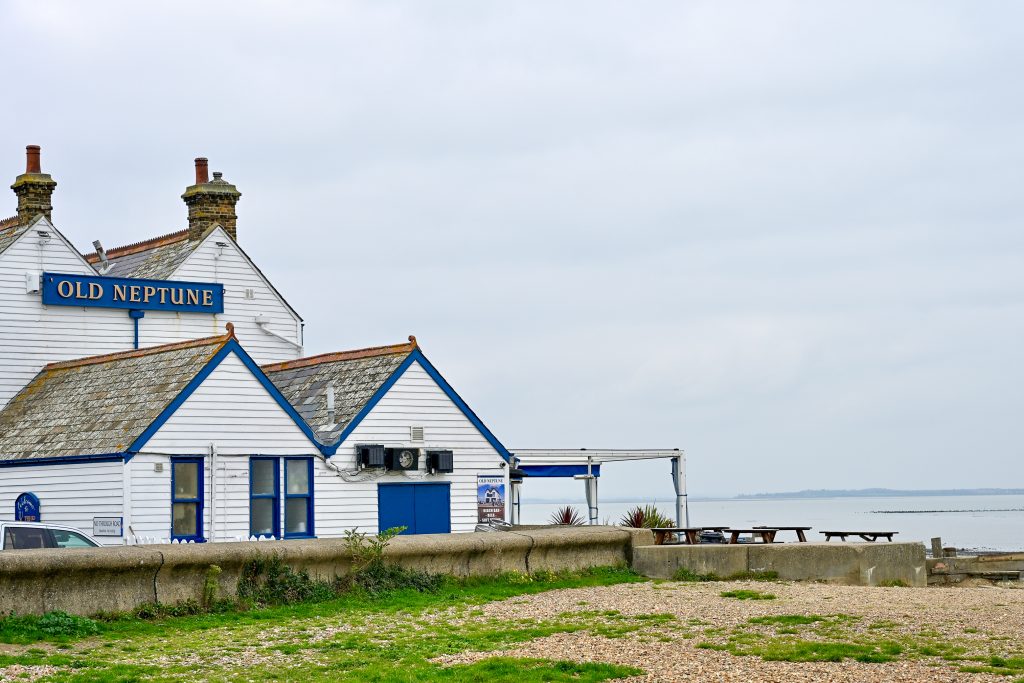
After recharging your batteries at ‘the Neppy’, continue along the shoreline, to a hub of oyster related buildings – the Oyster Brewing Company (their stout is delicious alongside a plate of oysters), The Whitstable Oyster (a smarter eatery linked to the WOFC and place to sample Native oysters), Pearson’s Crab & Oyster House (they take dogs in the snug/bar area), and the Lazy Lobster.
In front of The Whitstable Oyster restaurant, there’s an oyster shell recycling spot, where oyster shells can be reclaimed by the sea. In fact, it was something which amazed me along the shoreline walk, just how many oyster shells there were on the beach amongst the pebbles.
On the other side of The Whitstable Oyster, you’ll come across the Whitstable Fishermen’s huts (once stores), recently renovated as part of the Hotel Continental property, and offering a special stay in the town.
Between here and the buzzing Whitstable Harbour are a couple more options for food (if you have resisted trying oysters thus far) including The Forge and Keith’s Coffee Hut. Both are next to the dinghy club and so if you’re lucky there will be people sailing on the sea in front of you.
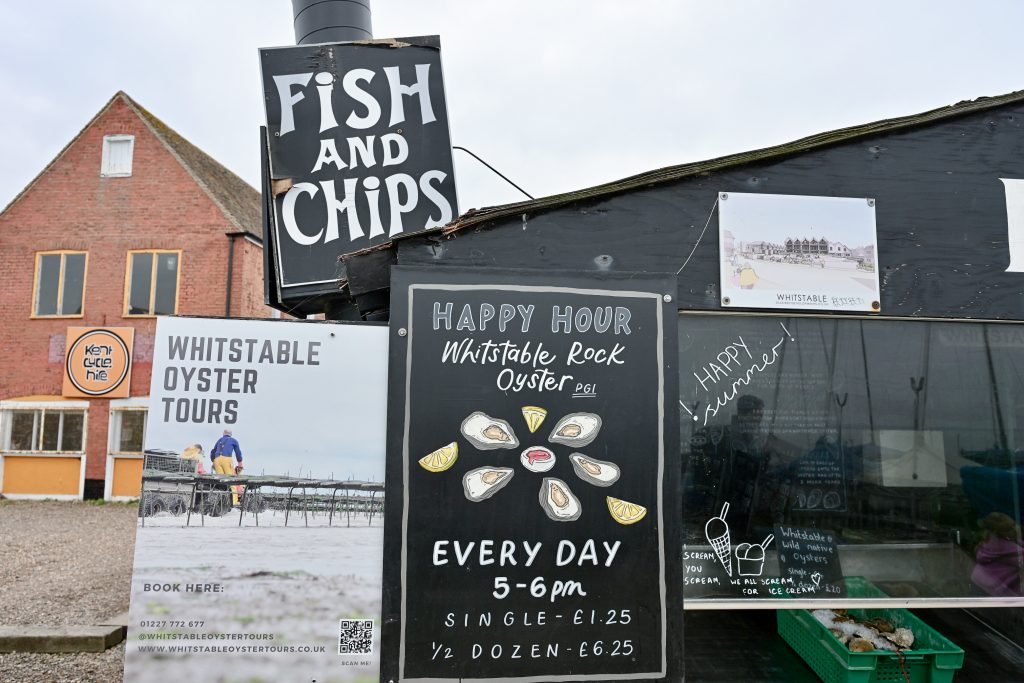
Continuing your walk, you will arrive at the Sea Scrub Sauna on the edge of Whitstable Harbour, a bespoke wood-fired sauna with uninterrupted sea views. For another time…
As well as housing the RNLI Lifeboat Station, Whitstable Harbour is surrounded by a variety of wooden huts and businesses, including West Whelks Oysters and The Oyster Shed, where staff were shucking and selling oysters in their thousands. If you don’t like oysters, there are plenty of other food options in the Harbour Market, along with artisanal crafts and gifts.
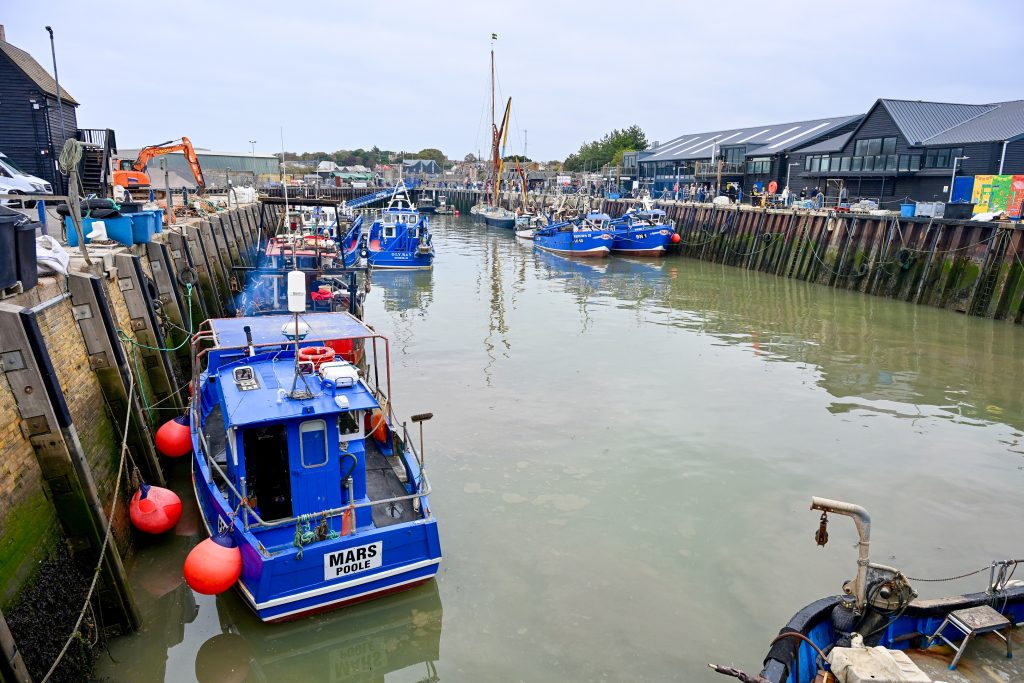
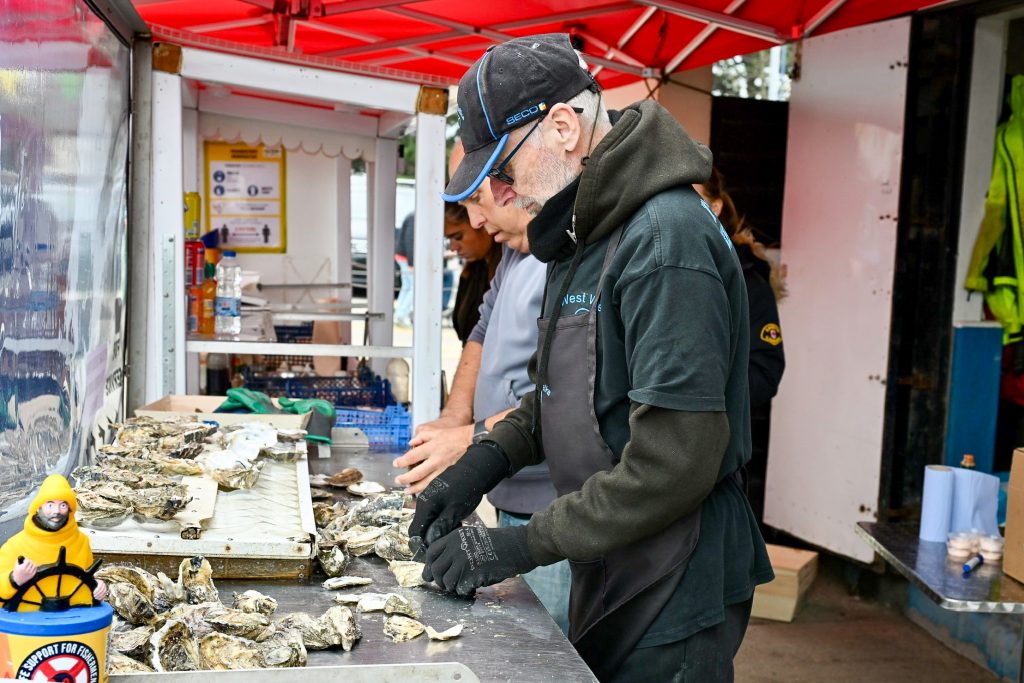
For future reference if you visit Whitstable again – you can take boat trips from Whitstable Harbour to the Maunsell Forts, or to see seals on The Swale, a sheltered river about 10 minutes away. The seals have patches of copper and brown fur from the iron oxide (rust) in the sand. You can even book a trip on a vintage Lifeboat called ‘The Chieftain’.
From the harbour the walk rejoins the beach, and yet another row of beach huts. Before arriving at the Tankerton slopes, you will find some public toilets on the promenade, just before the triple rows of beach huts. Take the grassy slopes up to the top of Tankerton and collect your car if you parked here.
If you didn’t park here, return towards town, making sure to pass Whitstable Castle before rejoining the High Street.
The whole walk could be done in 1.5 hours; however, it took us 3-4 hours as we took our time browsing in the shops and at the Harbour Market stalls, stopping for lunch at ‘the Neppy’ and finishing with more oysters and a pint of stout at The Forge as a reward at the end of our walk.
The walk gave us a good overview of the town and what was on offer for our weekend. We made a note of restaurants and pubs which looked appealing for future reference, such as the Old Navy Reserve Pub for Sunday Lunch (dog friendly). Thank you AllTrails, it was a perfect introduction to Whitstable!
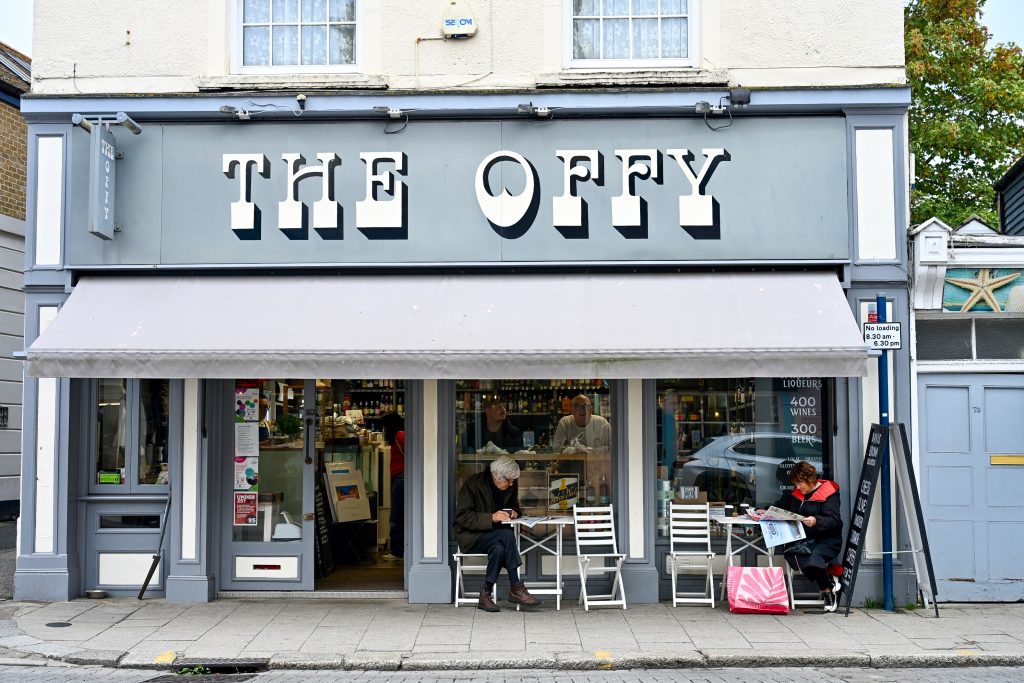
Final thoughts…
Why wasn’t Whitstable what I was expecting? My vision of most British seaside towns is one which includes amusement arcades, candy floss and ‘Kiss me Quick’ hats. Whitstable however had none of these – it was not a tacky seaside resort in any way, rather a charming, colourful community by the sea.
Also, we visited in the middle of October which was obviously not high season. Despite this, there were plenty of families making the most of the dry weather on the beaches and walking on the shoreline in chunky jumpers and scarves. I’d imagine that it might feel very different place to visit Whitstable in the height of the summer, but I’d be happy to find out….
Thank you so much for reading my blog, I hope you found it useful?
For more stories, itineraries, and advice, check out my Related Posts and sign up to receive my blogs by email.
If you have a blog-related question, please do ask in the Comments box and I’ll try to help…
Request please – if you use my photos, then please credit Love Travel Planning on your social media or give me a shout out on Instagram @lovetravelplanning as I am growing my website. Huge thanks.
Enjoy your travels!

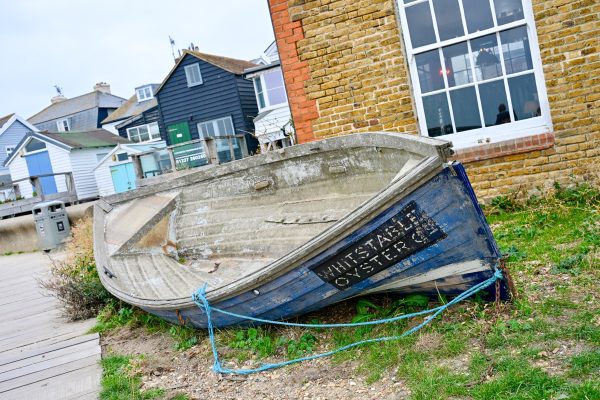
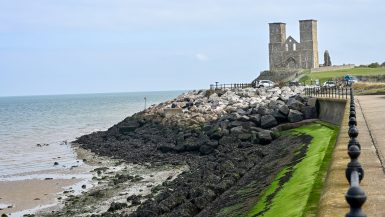


Leave a reply
You must be logged in to post a comment.